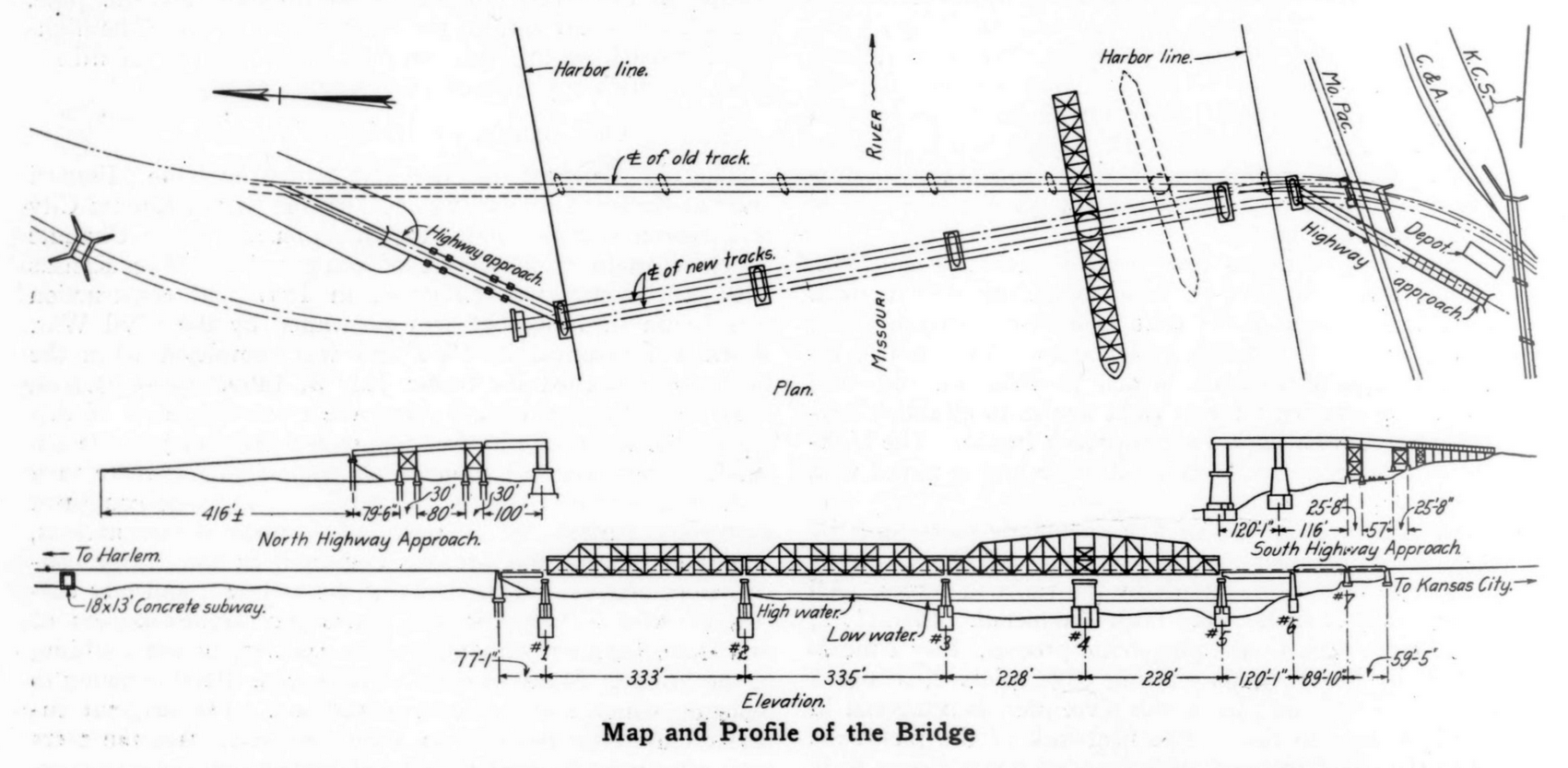The Atchison and St. Joseph Railroad would complete the St. Joseph-Winthrop portion in 1861; and begin construction on the North Kansas City-Weston portion of the line in 1863.
The Weston and Atchison Railroad would complete the lines between Weston and Winthrop. These two railroads would be merged back together in 1867 to form the Missouri Valley Railroad; which completed the North Kansas City-Weston portion of the line.
In 1867, the St. Joseph & Council Bluffs Railroad built an 81 mile line from St. Joseph, Missouri to the Iowa border. The entire line would parallel the Missouri River from Kansas City northwards.
By 1870; the railroad would be reorganized as the Kansas City, St. Joseph and Council Bluffs Railroad. This railroad also built a number of other branch lines and relocated significant portions of trackage along the Missouri River.
In 1901, the railroad would be formally merged into the Chicago, Burlington & Quincy Railroad; which had constructed a large amount of trackage around the region. The line was critical for connecting Council Bluffs to Kansas City.
The CB&Q continued to operate this as a mainline; until 1970. In 1970, the CB&Q would merge with Great Northern and Northern Pacific to form Burlington Northern; a large railroad which operated a consierable amount of trackage through the area.
In 1996, BN merged with the struggling Atchison, Topeka & Santa Fe Railway to form BNSF Railway; the current operator of the line.
This portion is currently the southern part of the St. Joseph subdivision.
12/03/21
View an article regarding the construction of this bridge.
One of the more noticed bridges in Kansas City is the Second Hannibal Bridge. It is named for the St. Joseph & Hannibal Railway.
The bridge formerly carried an auto deck above the railroad deck; not unlike the ASB Bridge downstream.
However, this bridge features a swing span. This swing span is dual leafed and features 8-panel, Baltimore Through Truss spans with riveted connections.
In addition, a pair of smaller 330 Foot Baltimore Through Truss spans approach the bridge to the north. These spans each contain 10 panels and pinned connections.
The north end also features a pair of deck girder spans. The south end features a pair of through girder spans, and a deck girder span.
These spans all rest on concrete substructures.

Blueprints of the bridge, from The Railway Age-Gazette; Volume 62
The bridge also used to carry US-169 (Broadway) which ran on a viaduct, into the top parts of the trusses. One small approach viaduct girder still exists on the south approach.
The road deck was removed in 1956 with the construction of a parallel bridge.
The first bridge here was built of wooden trusses between 1867 and 1869. The wood spans were replaced in 1888 with new iron trusses. However, these were only built for a single track.
A new bridge, the Second Hannibal Bridge was built on a new alignment in 1917. This bridge still exists today.
Because of the massive structure at this location, the author has ranked it as being regionally significant; due to a more common design than the ASB bridge, as well as the removed road deck.
Unfortunately, pictures of this bridge are also not easy to come by. Standing on the Broadway Bridge is dangerous, and the land by the river is difficult to access.
The photo above is an overview from the Broadway Bridge. The photo below is portal detailing on the bridge.
| Upstream | Leavenworth Terminal Swing Bridge |
| Downstream | ASB Bridge |
